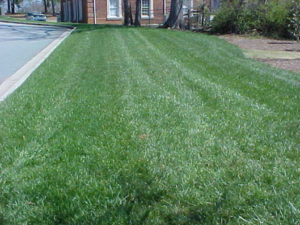Give That Cool Season Lawn What It Needs
go.ncsu.edu/readext?635409
en Español / em Português
El inglés es el idioma de control de esta página. En la medida en que haya algún conflicto entre la traducción al inglés y la traducción, el inglés prevalece.
Al hacer clic en el enlace de traducción se activa un servicio de traducción gratuito para convertir la página al español. Al igual que con cualquier traducción por Internet, la conversión no es sensible al contexto y puede que no traduzca el texto en su significado original. NC State Extension no garantiza la exactitud del texto traducido. Por favor, tenga en cuenta que algunas aplicaciones y/o servicios pueden no funcionar como se espera cuando se traducen.
Português
Inglês é o idioma de controle desta página. Na medida que haja algum conflito entre o texto original em Inglês e a tradução, o Inglês prevalece.
Ao clicar no link de tradução, um serviço gratuito de tradução será ativado para converter a página para o Português. Como em qualquer tradução pela internet, a conversão não é sensivel ao contexto e pode não ocorrer a tradução para o significado orginal. O serviço de Extensão da Carolina do Norte (NC State Extension) não garante a exatidão do texto traduzido. Por favor, observe que algumas funções ou serviços podem não funcionar como esperado após a tradução.
English
English is the controlling language of this page. To the extent there is any conflict between the English text and the translation, English controls.
Clicking on the translation link activates a free translation service to convert the page to Spanish. As with any Internet translation, the conversion is not context-sensitive and may not translate the text to its original meaning. NC State Extension does not guarantee the accuracy of the translated text. Please note that some applications and/or services may not function as expected when translated.
Collapse ▲Growing a beautiful, lush lawn in the south can be a frustrating task, especially with cool-season grasses (Tall Fescue, Kentucky Bluegrass, Ryegrass, etc.). The heat and drought can be a major stressor on cool-season grasses. However, with deep roots and dense foliage growth, a lush lawn is definitely possible. How do we accomplish this—with careful and sufficient nutrient applications in the active growing season.
Calculated and timely fertilization during the active growing season of the grass can improve the lawn the rest of the year by producing deep healthy roots and dense foliage that can utilize deeper water reserves and cool the plant in extreme heat. As the soil becomes saturated and cooler, these grasses have their best opportunity to develop a deep and effective root mass. Also, these plants are at their greatest point of growth for the year, so the nutrient uptake is maximized.
For a gradual release of nutrients to the grass as it is growing, three applications of fertilizer are necessary. It is always best to work with your local County Extension Agent to get a soil test and develop a plan to improve the fertility of your soil. I recommend individuals remember three dates for fertilizing cool-season grasses: Labor Day, Thanksgiving, and Valentine’s Day. First, apply a starter fertilizer (something like 18-24-12) at reseeding/sowing. A second application of a Nitrogen-rich fertilizer (such as 12-4-8) is made near Thanksgiving. Finally, a last application of Nitrogen (30-0-0) in the month of February. Be careful not to apply it too late. Fertilizing too late can cause an increase in disease pressure. The rate of fertilizing a lawn is always based off the Nitrogen content and should not exceed 1 pound of Nitrogen per 1,000 square feet.
Read more on Carolina Lawns Guide.





